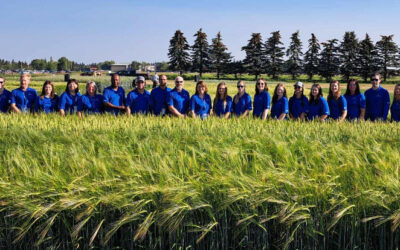Plant breeding has come a long way and there’s a wealth of techniques that breeders use to make new crop varieties. Plant breeders are working with everything from conventional plant breeding to newer techniques such as gene editing.
On the Jan. 18 episode of Seed Speaks, we’re taking a closer look at what techniques modern plant breeders are using. We’re joined by Beni Kaufman, director of business development at Agriplex Genomics; Ron Knox, research scientist with Agriculture and Agri-Food Canada (AAFC); and Tom Warkentin, pea breeder at the University of Saskatchewan (U of S).
Kaufman received his degree in molecular genetics from the University of Illinois, working for most of his career at Pioneer Hi-Bred as a senior research scientist. Before joining Agriplex Genomics, he worked as an independent consultant and as the secretary general of the International Seed Testing Association. He joined Agriplex Genomics first as the director of operations before moving into his current position as director of business development. Kaufman’s work mainly focuses on developing SNP panels in support of breeding applications.
Knox has 40 years of cereal research experience with 35 years working in the areas of biotechnology, genetics, plant pathology, and germplasm development for wheat. At AAFC in Swift Current, Sask. he supervises molecular genetics and doubled haploid labs for performing marker development research, marker assisted selection for the durum and hexaploid wheat breeding programs, and doubled haploid production for breeding and research. Knox’s wheat pathology work involves evaluating lines for disease response within the breeding program and understanding genetics of resistance.
Warkentin has worked as a pea breeder at the Crop Development Centre at the U of S since 1999. He has released many pea varieties that are production in Western Canada. Warkentin’s research focuses on many aspects related to the pea crop, including disease resistance, heat/drought tolerance, nitrogen fixation, and end-use quality. He also runs a small soybean breeding program that breeds soybeans for the shortest season regions of the Prairies with the first varieties from the program to be released soon.
Join us on Jan. 18 at 12 p.m. CST on Seed World’s Facebook,YouTube and LinkedIn pages to watch the discussion.
Related Articles
Gene Editing Excites the Minds, and Taste Buds, of Consumers





